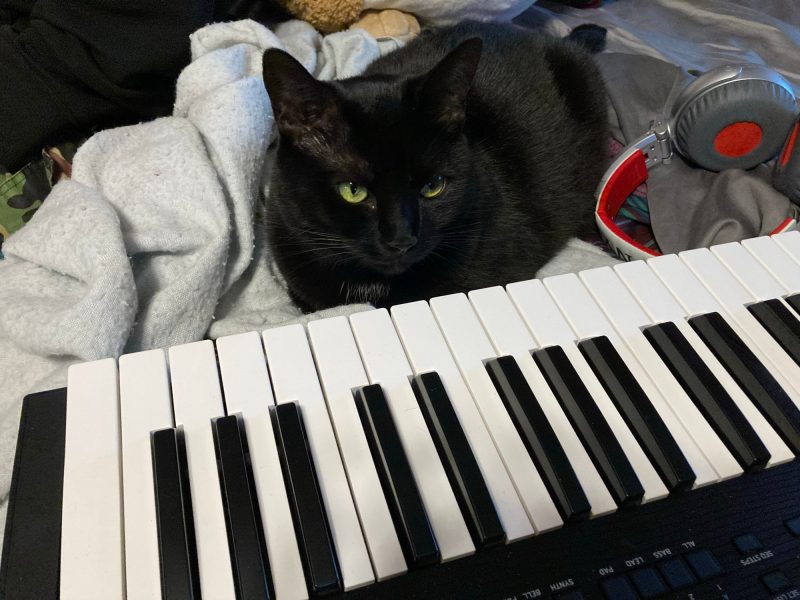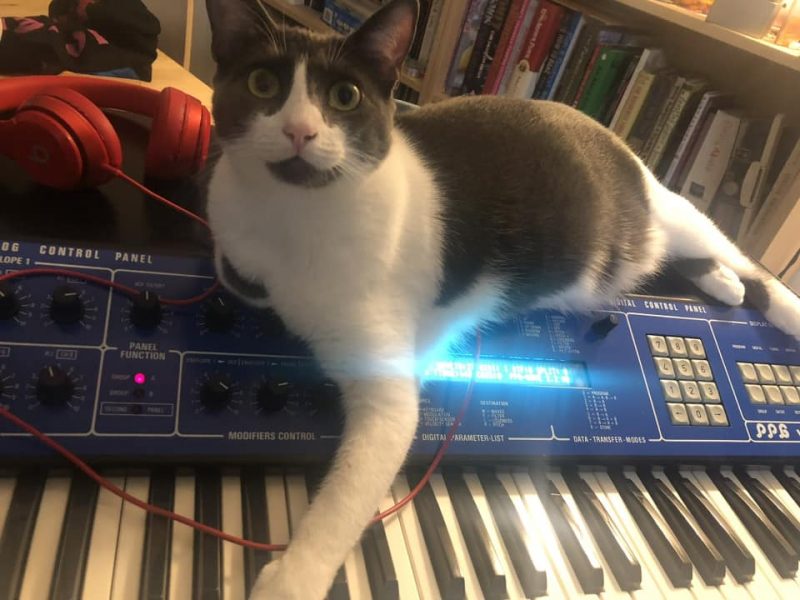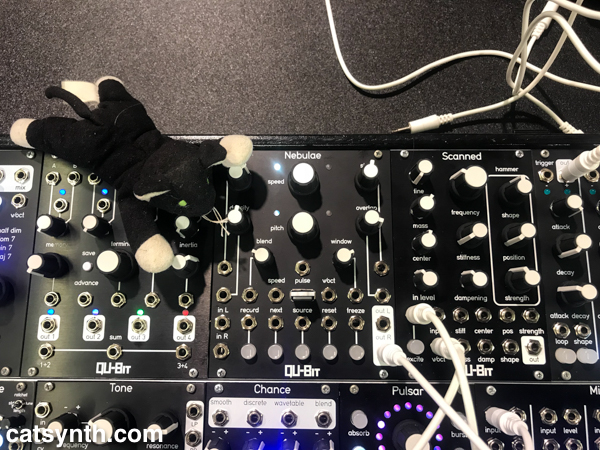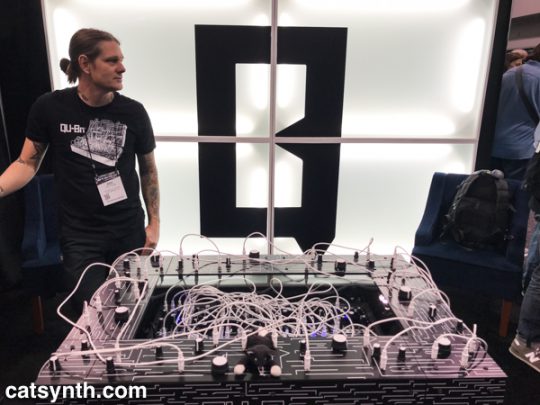
Beautiful black cat Tak sits in front of a Korg ModWave synthesizer, ready to create her composition filled with complex wavetable goodness.
Submitted by rauðvik / blávik (@raudvik.bsky.social) via BlueSky.


Beautiful black cat Tak sits in front of a Korg ModWave synthesizer, ready to create her composition filled with complex wavetable goodness.
Submitted by rauðvik / blávik (@raudvik.bsky.social) via BlueSky.

Gracie shows proudly shows off a PPG Wave. Clearly putting her paw of approval as Quality Manager for Synthetic Dreamscapes.
Submitted via our Facebook page. You can see all of Gracie’s features on CatSynth via her tag.
With wavetable synthesis very much in vogue again, it’s a good time to look back at the PPG Wave, which was the OG for this type of synthesis using large palettes of small, carefully crafted waveforms to create rich timbres at the oscillator level, before the signal goes to any filters, amplifiers or such. Gracie is fortunate to have one of these originals to play.

One of our first stops at NAMM 2018 was to visit our friends at Qu-Bit Electronix to see what they are up to. They have three new modules, Synapse, Nebulae MK2, and Scanned. We had a chance to try them out for ourselves – you can see a bit of our experience in this video.
We at CatSynth own and enjoy using the original Nebulae module, but the MK2 is a significant improvement, with more versatile and expressive controls for pitch, speed, and granularity (rate, window, etc.). The main speed button traverses quite a range both forward and backward, and features a quick reset to unity by pressing. Similar functionality is available with the pitch button. The granularity features go beyond the original, including the ability to freeze the sound in place to create a steady timbre from any section of a recording.
The Scanned module is perhaps the first hardware implementation of scanned synthesis technique pioneered by Max Matthews and others. The simplest way to describe it is as a system that provides the control of a struck or plucked string, but with a far greater range of sound than a vibrating string, such as any wavetable source. The module has independent controls for pluck, tension, and many more parameters, of course all individually controlled via CV. With pitch and gate input, it becomes the starting block for a rich modular instrument.
Although not included in the video demo, the Synapse is an interesting and handy module for mixing, switching, and otherwise routing a variety of CV sources to various destinations all from a single module. It makes your CV sources more like a mixer with cross-fades and such.

It’s always fun to check in with Qu-Bit, and we look forward to seeing more of these modules.